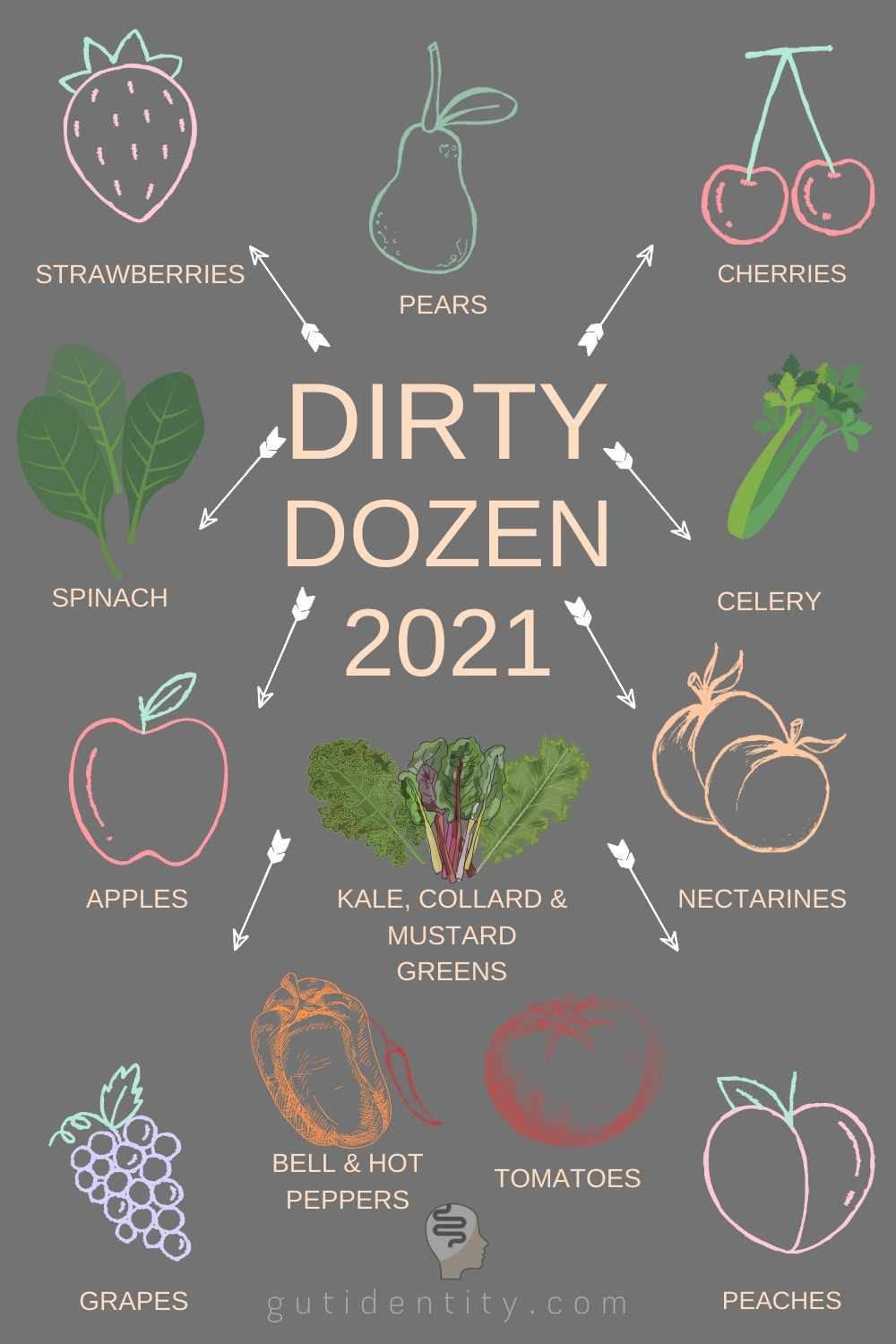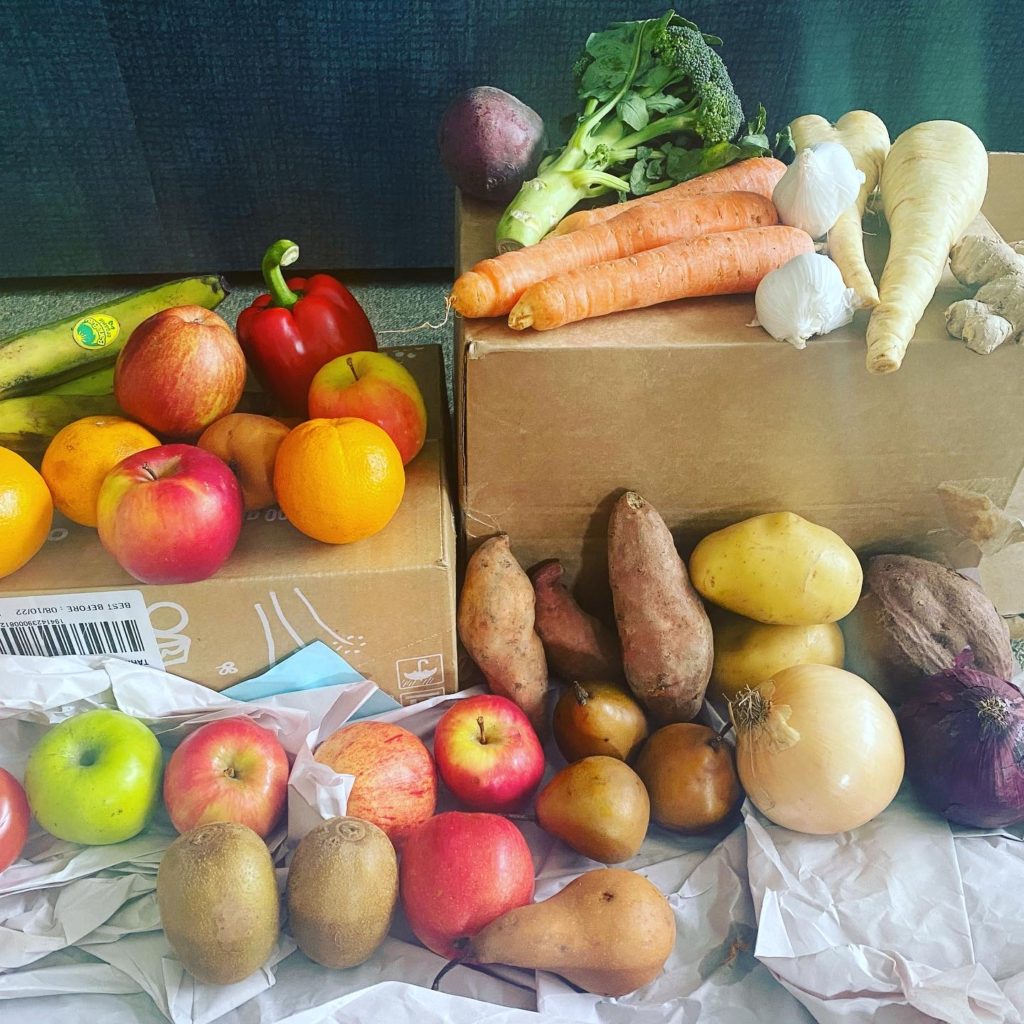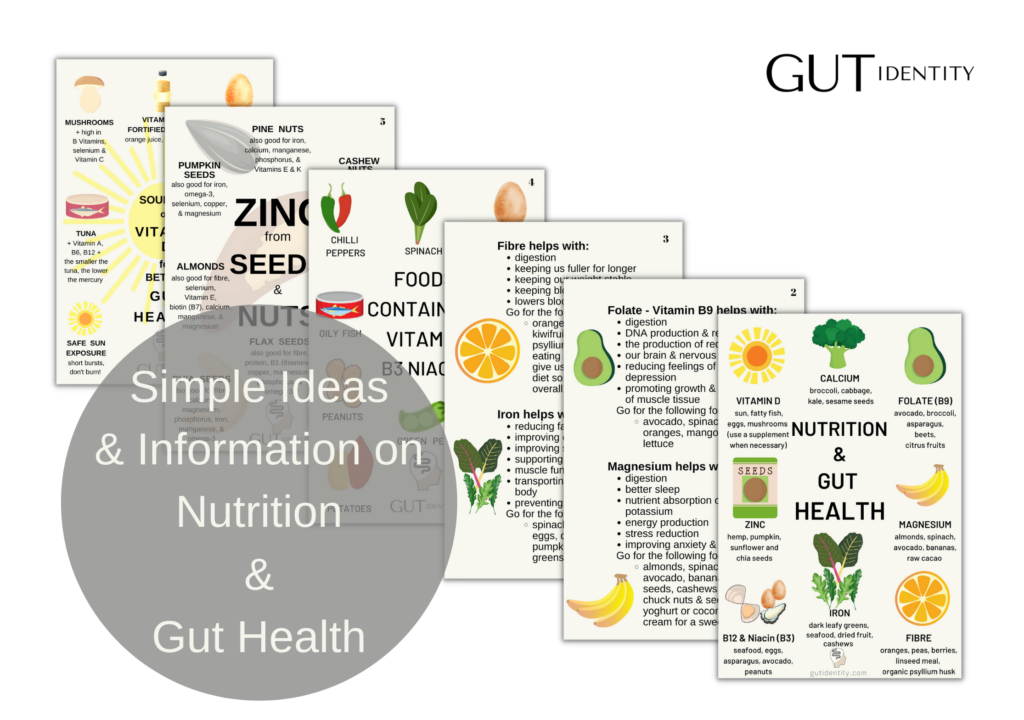The Dirty Dozen and Clean 15 are two lists brought out each year detailing the amount of pesticide residue left on fruit and vegetables. These lists provide a guide for us, the consumer, as to what food can be bought from the supermarket, or whether an organic piece of produce would be more suitable.
Why are the lists important?
Here’s a short clip to find out why.
What goes on our food, goes in us
Have you ever seen media images of people spraying pesticides on crops? What are they wearing? Why are they wearing hazmat suits? Because what they are spraying on our food kills shi*. If that can kill little bugs and insects, can it kill us? Hmmmmm??? If I can buy certified organic, I will. It’s for this reason alone.
After doing heavy research into gut health, what can harm the gut, and then not wanting to cause more damage to the gut, making certified organic produce a top priority seemed like a no brainer for me. I basically just do the best I can and that’s all we can do because we are all in different situations.
I stumbled across the Dirty Dozen and Clean 15 by sheer accident when researching Coeliac Disease and why it was increasing.
Want to find out more about why a condition such as Coeliac Disease is on the increase, check out the following related article.
Is Coeliac Disease Increasing?
So, What is the Dirty Dozen?
Let’s start with the Dirty Dozen. This list is compiled of 12 fruits and vegetables. Samples are taken from around 35,000 fruits and vegetables to test how much chemical residue is left on each piece of produce. The produce containing the most pesticide residue, end up on the Dirty Dozen list.
These are the top contenders for the year 2021:

To access the Dirty Dozen list, click HERE.
If we can buy these items organic, or better still, certified organic, we have a far better chance of reducing the amount of pesticide residue we consume. While it’s important to wash our fruit and vegetables every time before we consume or cook them, if we can buy these 12 items certified organic, we can reduce the chemical load on the body.
Now let’s take a look at the Clean 15 list.
The Clean 15 List
The Clean 15 is just the opposite of the Dirty Dozen. The list is comprised of the top 15 fruits and vegetables that contain the LEAST amount of residue from pesticides and herbicides.
Check it out below.

To access the Clean 15 list, click HERE.
The Cost – Prevention is better than cure
It’s hard to put a price on good health so for that fact alone, I don’t. Nearly all my money goes towards my health and well-being. Long gone are the days of wasting money on unnecessary items. So what I don’t waste on crap and useless items now, I put into my food.
The box of fruit and veggies below are all certified organic that I buy locally. This lot cost $60 NZD. They are seasonal and I never know what’s coming, but there is a good range and I know it’s not going to break my gut wall. Buying produce like this, also ensures that I don’t waste anything. It forces me to get creative and stick to my meal plans. I can’t stand chucking out food or food wastage, so my only option is to eat or cook them.

Even on a tight budget, $60 is a small price to pay for quality and variety and it’s sure as hell cheaper than paying for a chronic disease later. Additionally, eating seasonally helps out our gut microbiome because they get to feed on different foods which is what they need to survive and do the jobs they were designed to do. Because certain pesticides contain antibiotics, this can cause harm to our gut which then has further implications for our health.
Related article:
Changing our Perception of Disease
The Health Benefits of Eating Certified Organic
If we want to decrease the chemical load on our body, especially our gut, eating organic may help us avoid things like cancer. In an article brought out by the Department of Biotechnology, Microbiology and Human Nutrition in Poland, it was found that:
“Although generally, the consumption of organic food does not provide a significant nutritional advantage compared to a conventional diet, regular and frequent consumption of organic products generally reduces the risk of overweight and obesity, both for women and men, as well as non-Hodgkin lymphoma in case of women.“
In another article published in the journal Toxicological Sciences in 2020, the impact of environmental chemicals on the gut microbiome was examined. They found that although our diet contributes to alterations in our gut microbiome, environmental chemicals in our food are often overlooked.
It’s hard to think that small amounts of chemical residue would have an effect on our gut. But if all those small amounts add up over time, it’s no surprise that our gut wall could weaken over time.
Everything we eat has an impact somewhere in the body. We just don’t feel the result of that impact straight away. That’s why it’s really important to minimise the chemical load, in order to minimise the harm that may occur later on. So the great news is, there are things we can do to help out our gut. Check out the poster below and start looking after your gut today
Gut Health & Lifestyle Choices
Available on Etsy

Bottom Line
So if we’re keen on improving our overall health, and helping out our gut by keeping our microbiome in good condition, it kinda makes sense to put our money towards produce that is going to help, not harm.
Sources and Further Information
Human health implications of organic food and organic agriculture: a comprehensive review
The Impact of Environmental Chemicals on the Gut Microbiome







